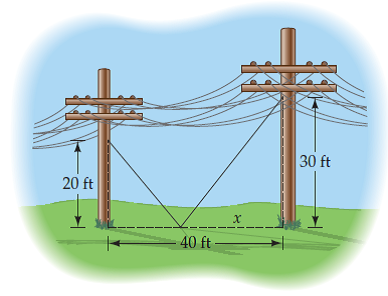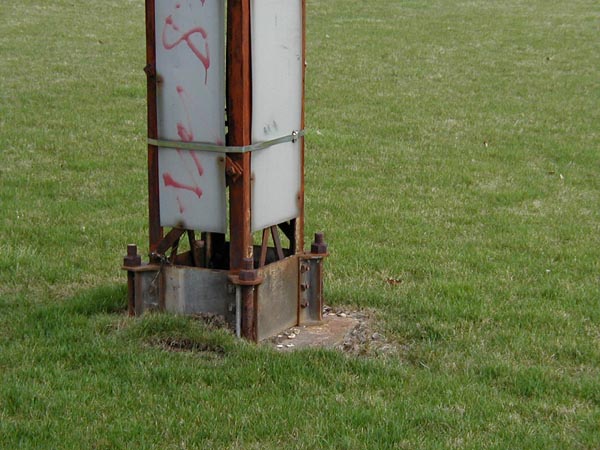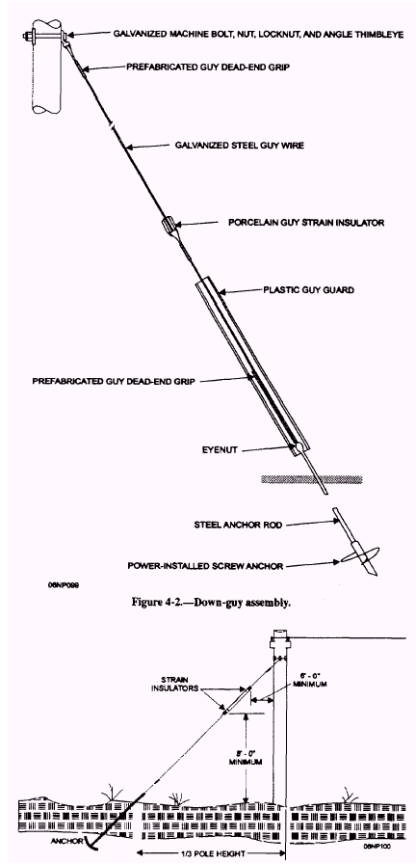

They should be guyed the same as terminal poles, except that there will be two All corners in the line are considered as dead ends. A down guy used at the ends of pole lines to counterbalance the pull of the line conductors is called a "terminal guy" or a "dead-end guy" This type of guy is preferable if field conditions permit its installation since it transfers the unbalanced force on a pole or structure to the earth without intermediate supports. The rod and anchor installed in the ground The guy should be considered as counteracting the horizontal component of the force with the pole or supporting structure as a strut resisting the vertical component of the forces.ĭOWN GUY.- A "down guy" consists of a wire running from the attachment near the top of the pole to Guys counteract the unbalanced force imposed on the poles by dead-ending conductors by changing conductor size, types, and tensions or by angles in the transmission or distribution line. Guys are used whenever the wires tend to pull the pole out of its normal position and to sustain the line during the abnormal loads caused by sleet, wind, and cold. Guys A guy is a brace or cable fastened to the pole to strengthen it and keep it in position. Guy wire is used in various sizes with diameters from 1/ 8 to 1 3/ 4 inches. Alumoweld wire consists of steel wire strands coated with a layer of aluminum to prevent corrosion. Guy Wire The wire, or cable, normally used in a down guy is seven-stranded galvanized steel wire or seven-stranded alumoweld wire.

Anchor rods vary in diameter from 1/ 2 to 1 1/ 4 inches and in length from 3 1/ 2 to 12 feet. have an ultimate strength equal to, or greater than, that required by the down-guy assembly. The deadman is not widely used today because of the time and effort required to place it.Īnchor Rods The anchor rod serves as the connecting link between the anchor and the guy cable. It is installed 6 feet deep in loose or sandy type of soil, with an angle of pull for the guy wire and rod assembly equal to 45 degrees. This anchor is made of a 6- to 8-foot-long piece of treated power pole and an anchor rod. These three types of anchors are manufactured and are commonly used because of their ease of installation.įigure 4-1, view D, is called a deadman. Once expanded, the anchor is secure and strong enough to secure the guy.įigure 4-1, view B, shows a plate of a never- creep anchor, and view C shows a screw anchor that is installed using an earth auger. The expanding anchor, the most popular type, as shown inįigure 4-1, view A, is designed to be placed in the ground and then expanded with the aid of the tamping bar. Anchors come in many forms and have different methods of installation.įigure 4-1 shows the most common types of anchors. You must know the type of soil before you can select a certain type of anchor.

The guys and braces are used to counter the horizontal strain on the pole caused by conductors, pole-line components, and abnormal loads, such as snow, sleet, or wind.Īnchors Anchors are designed to meet specific soil conditions. Anchors are buried in the ground, and guy wires are connected to the anchors and attached to the pole, or a push brace may be used. To accomplish this, you can use guys, anchors, and braces. POLE GUYS When constructing power lines, you will need a means of strengthening poles and keeping them in position.


 0 kommentar(er)
0 kommentar(er)
